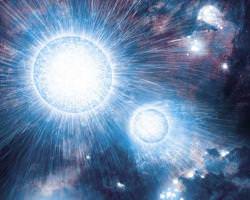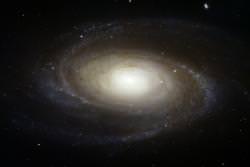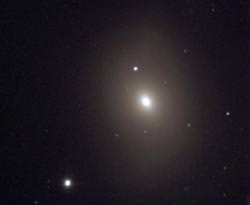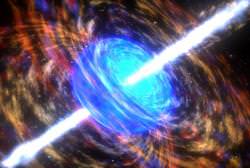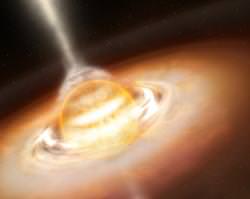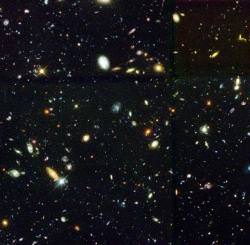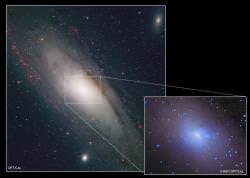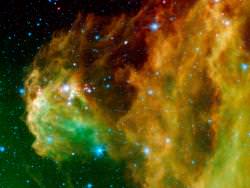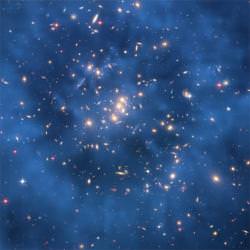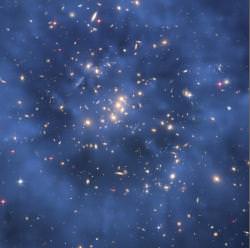When astronomers look into the night sky, they see back into time. The light from the most distant galaxies has taken billions of years to reach us. Astronomers can measure that these galaxies are hurtling away from us, as part of the Universe’s expansion after the Big Bang. The more distant a galaxy is, the more quickly it’s moving away from us.
We know that the Universe started from a single point billions of years ago, we know that it’s expanding, and thanks to the mysterious dark energy, we know that this expansion is accelerating. In billions of years, distant galaxies will be speeding away from the Milky Way so quickly that they will recede from us faster than the speed of light. Their light will dim and fade away, and disappear from our view of the cosmos, forever inaccessible and unknowable.
And three trillion years from now, all the galaxies will have passed over the horizon, and faded from view. Future cosmologists will know of only one galaxy: ours. The Universe will appear static and unchanging, slowly cooling away. And this view will be the same from all points of view in the Universe. Physicists in every galaxy will only know of their own home, and nothing else.
This bleak view of our lonely future is all thanks to some new calculations from Lawrence Krauss from Case Western Reserve University and Robert J. Scherrer from Vanderbilt University. Their new article, called the “The Return of the Static Universe and the End of Cosmology,” was recently award a prize by the Gravity Research Foundation, and will be published in the October issue of the Journal of Relativity and Gravitation.
“While physicists of the future will be able to infer that their island universe has not been eternal, it is unlikely they will be able to infer that the beginning involved a Big Bang,” report the researchers.
Another powerful tool that astronomers use to know the Universe is the cosmic microwave background radiation; the afterglow from the Big Bang. The light from these early moments of our Universe has already been red shifted to longer and longer wavelengths with the expansion of the Universe. What used to be visible light is now microwave radiation, and will move through the radio spectrum. Eventually the wavelengths will be so large that astronomers will have no way to detect it.
Researchers also measure the quantities of hydrogen, helium and deuterium across the Universe. Their quantities match predictions for what should have occurred in the Big Bang. For a period, the entire Universe was like a giant star, converting primordial gas into heavier elements. Rapid expansion ended this period, and future elements were formed only within stars. Although the quantities of these elements match predictions today, our future galaxy will have dispersed them and combined them so thoroughly that they’ll be indiscernible as the helium produced in stars will dominate.
“Eventually, the universe will appear static,” said Krauss. “All evidence of modern cosmology will have disappeared.”
We can only hope that research done by cosmologists today is preserved, so future physicists can know that the true nature of the Universe, and not the static place they see around them.

